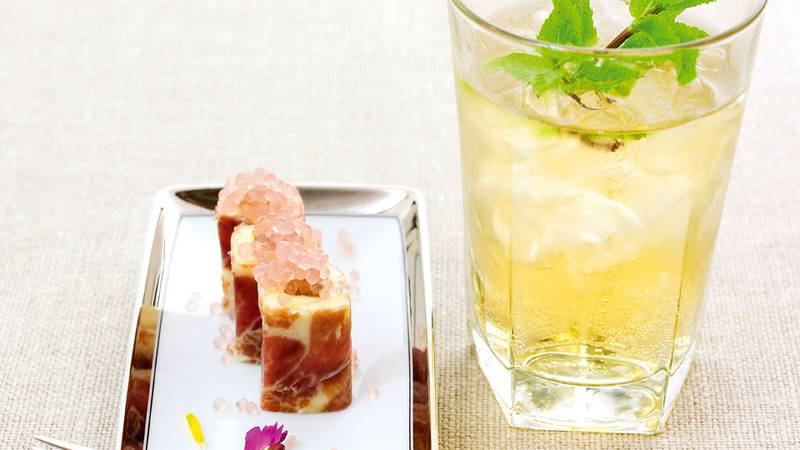Gabrielle Plastre is Canada’s reigning Master of Port. Plastre bested a number of the country’s best sommeliers in a contest that challenged theoretical and practical skills and tested the sommeliers’ abilities to serve Port. CAPS Canada could think of no one better to ask about some new approaches to serve this classic wine styles.
Gabrielle’s Suggest 5 New Ways to Introduce Port to Your Clientele
1. Mix a cocktail.
Port has an interesting balance between sugar and acidity making it the perfect partner for our cocktail list. White Port is absolutely delicious when mixed with mint, basil or tarragon. Rosé Port goes well with berries. As for Ruby Port, try a classic Sangria, the higher alcohol content in Port allows you to substitute the wine and the spirit with one pour!
Port & Tonic, with a Twist
3 oz White Port
2 slices lemon
1 branch tarragon
2 dashes Dillon’s lemon bitters
Tonic water
Club soda
Candied ginger, for garnish
Directions: In a tall ice-filed glass add White Port, lemon slices, tarragon and biters. Top with equal amounts tonic water and club soda.
Pink is the New Red
2 oz pink port
1 oz raspberry puree
1 oz cranberry juice
6 mint’s leaves, plus more for garnish
Directions: Place ingredients in an ice-filled shaker. Shake well, and then strain and serve in a chilled Marie Antoinette’s glass. Garnish with mint.
2. Try Colheita White Port and Tawny By the Glass
For our clientele, Port is often associated with dark berries and chocolate flavours found in Ruby, Late Bottled Vintage and Vintages Port. But the branch of White Port or Tawny with mention of age and Colheita offers an entirely different world of aromas, such as dried and candied fruits, spices, caramel and nuts. On top of that, since they were aged in an oxidative environment, they can stay open for months before losing its organoleptic proprieties making a perfect candidate for your program by the glass.
3. See Port Through New Glasses
By changing the glassware in which you pour it. Personally, I rather serve Port in a classic white wine glass instead of the smaller traditional port glass. A bigger glass is often more pleasant for your client and it lets them swirl the port around. The larger opening allows your client to enjoy the aromas without the burning sensation of the alcohol. It is also easier if you have a Vintage Port that needs decantation to pour from a carafe into a wine glass.
4. Introduce Port During the Meal
Port does have higher sugar content than regular still wine, but that doesn’t mean it cannot be poured side by side with salty dishes. It creates an interesting pairing based on classic contrast: sweetness versus saltiness. The salt enhances the flavours and the velvety texture of port created by the sugar and the alcohol content. Try pairing a Colheita, from the tawny family, with a dish including roasted poultry, nuts, honey, apricot, roasted root vegetables or old grains that have nutty flavour like quinoa or kamut. Try pairing a Vintage, from the ruby family, with a dish including caramelized onions, demi-glace sauce, bitter cocoa, grilled meat, eggplants, or Portobello’s mushrooms.
5. Change Your Perception of Port
Although Port wine is a classic, we tend as sommelier to be attracted by newest trend. There is nothing wrong with a great classic such as Port, they made history for a reason! Even in the oldest appellation on earth, there is always something new! Winemakers are now putting forward the aspect of a specific terroir. Also, we are starting to see Port with a little less sugar and a bit less alcohol when permitted, bringing out a fresher style. Call it a fresh take an old style. Try a Single Quinta Vintage Port and let it surprise you and your guests.







